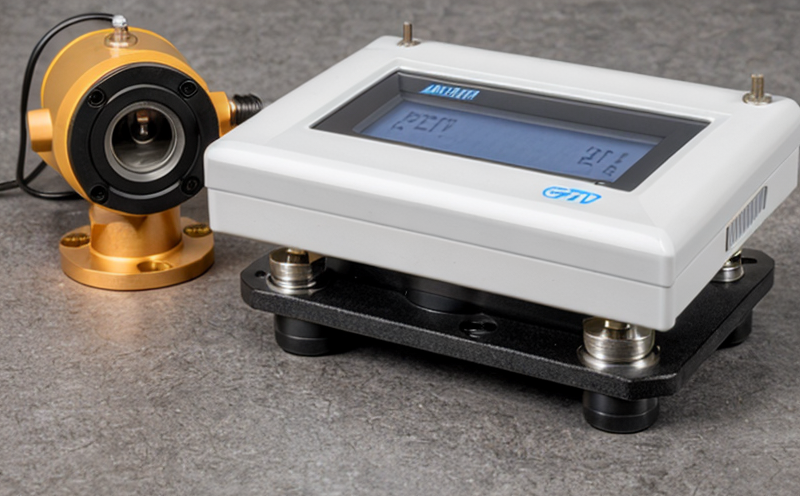Evaluating the Effects of Sensor Drift on Gas Detection Accuracy
Evaluating the Effects of Sensor Drift on Gas Detection Accuracy Ensuring Industrial Safety and Compliance
In todays industrial landscape, gas detection is a critical aspect of maintaining worker safety and environmental responsibility. The use of sensors to detect gases has become increasingly prevalent in various industries, including manufacturing, oil and gas, and healthcare. However, one significant challenge associated with sensor-based gas detection systems is sensor drift. Sensor drift refers to the gradual degradation of sensor accuracy over time due to various factors such as exposure to temperature, humidity, and contaminants.
At Eurolab, our team of experts understands the importance of precise gas detection for industrial operations. Thats why we offer a specialized laboratory service called Evaluating the Effects of Sensor Drift on Gas Detection Accuracy. This comprehensive evaluation helps industries assess the impact of sensor drift on their gas detection systems, ensuring accurate and reliable results.
What is Sensor Drift?
Sensor drift occurs when sensors lose their accuracy over time due to various environmental factors. This can lead to false alarms, incorrect readings, and compromised safety protocols. The effects of sensor drift can be catastrophic in industrial settings where even a small deviation from normal readings can have severe consequences.
Why is Evaluating the Effects of Sensor Drift on Gas Detection Accuracy Essential for Businesses?
Evaluating the Effects of Sensor Drift on Gas Detection Accuracy is crucial for businesses that rely on gas detection systems to ensure worker safety and compliance with regulations. Some key reasons why this service is essential include
Improved Safety Regular evaluations help identify potential issues before they become major problems, ensuring a safe working environment.
Compliance Accurate gas detection is critical for meeting regulatory requirements, and Eurolabs evaluation services help industries maintain compliance.
Reduced Downtime By identifying and addressing sensor drift issues early on, businesses can minimize downtime and maintain productivity.
Cost Savings Correcting sensor drift issues before they become major problems saves costs associated with repairs, replacement, or even lawsuits.
Key Benefits of Evaluating the Effects of Sensor Drift on Gas Detection Accuracy
Here are some key benefits of our laboratory service
Accurate Results Our evaluation services ensure that gas detection systems provide accurate and reliable results.
Comprehensive Analysis We conduct a thorough analysis of sensor performance, including testing for temperature, humidity, and contamination effects.
Recommendations for Improvement Our team provides recommendations for improving sensor accuracy and reducing the impact of drift.
Enhanced Safety Protocols By identifying potential issues early on, we help industries develop enhanced safety protocols to protect workers.
How Does Evaluating the Effects of Sensor Drift on Gas Detection Accuracy Work?
Our evaluation process involves several steps
Sensor Collection We collect sensors from clients gas detection systems and transport them to our laboratory.
Testing Our team conducts a series of tests, including temperature, humidity, and contamination testing, to assess sensor performance.
Analysis We analyze test results to identify any issues related to sensor drift or other factors affecting accuracy.
Reporting Clients receive a comprehensive report outlining our findings, recommendations for improvement, and enhanced safety protocols.
QA Frequently Asked Questions about Evaluating the Effects of Sensor Drift on Gas Detection Accuracy
Here are some frequently asked questions and answers
Q What types of sensors do you evaluate?
A We evaluate various types of gas detection sensors used in industrial settings, including electrochemical, infrared, and catalytic bead sensors.
Q How often should I have my sensors evaluated for sensor drift?
A Regular evaluations are recommended every 6-12 months or as specified by regulatory requirements.
Q What happens if I discover that my sensors need to be replaced due to sensor drift?
A We provide recommendations for replacing or recalibrating sensors, ensuring minimal downtime and optimal performance.
Q How long does the evaluation process typically take?
A Our standard evaluation service takes approximately 2-4 weeks from receipt of sensors, although this may vary depending on testing requirements.
Conclusion
Evaluating the Effects of Sensor Drift on Gas Detection Accuracy is a critical aspect of industrial safety and compliance. By partnering with Eurolab, businesses can ensure accurate gas detection results, reduced downtime, and cost savings associated with repairs or replacement. Our comprehensive evaluation service helps industries develop enhanced safety protocols to protect workers and meet regulatory requirements.
At Eurolab, we understand the importance of precision in gas detection and are committed to providing expert laboratory services that support industrial operations worldwide. For more information about our Evaluating the Effects of Sensor Drift on Gas Detection Accuracy service or other laboratory services, please contact us today.
Key Words Sensor drift, gas detection accuracy, Eurolab, laboratory service, industrial safety, compliance, sensor evaluation.




